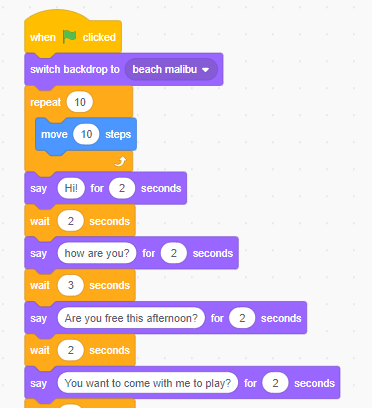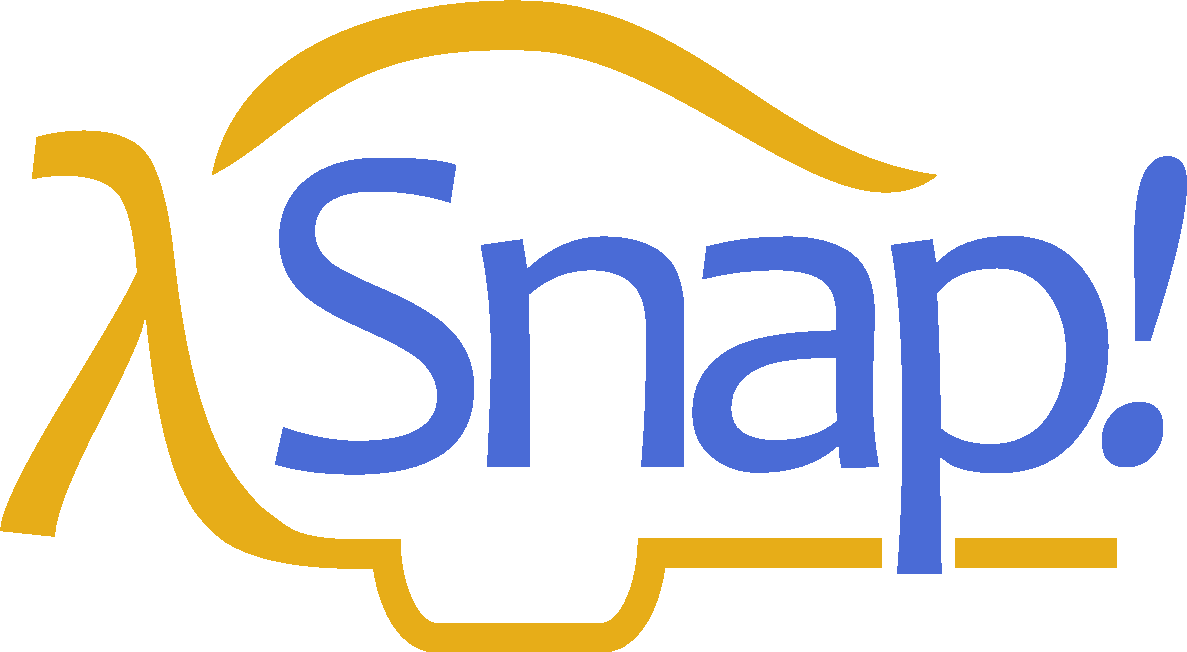|
Frame-based Editor
A frame-based editor is a specific kind of structure editor, typically used as a source code editor for the manipulation of computer programs. Program elements are represented by ''frames'', which form the standard atomic unit of manipulation in the editor. Frames in the editor represent nodes in the underlying syntax tree of the language being written, such as simple statements, control structures, or methods, and are manipulated as single entities in the user interface. The representation of frame-based programs on screen makes use of graphical and textual elements. Most fundamentally, scope is presented by graphical boxes (the "frames" that give these editors their name), but other graphical elements, including color and graphical presentation, are also employed. Manipulation of frames in frame-based editors is typically supported equally via mouse-based gestures and keyboard manipulation. Origin The concept of Frame-based editing was developed at King's College London a ... [...More Info...] [...Related Items...] OR: [Wikipedia] [Google] [Baidu] |
Structure Editor
A structure editor, also structured editor or projectional editor, is any document editor that is cognizant of the document's underlying structure. Structure editors can be used to edit hierarchical or marked up text, computer programs, diagrams, chemical formulas, and any other type of content with clear and well-defined structure. In contrast, a text editor is any document editor used for editing plain text files. Typically, the benefits of text and structure editing are combined in the user interface of a single hybrid tool. For example, Emacs is fundamentally a text editor, but supports the manipulation of words, sentences, and paragraphs as structures that are inferred from the text. Conversely, Dreamweaver is fundamentally a structure editor for marked up web documents, but supports the display and manipulation of raw HTML text as well. Similarly, molecule editors typically support both graphical and textual input. Structure editing predominates when content is graphical ... [...More Info...] [...Related Items...] OR: [Wikipedia] [Google] [Baidu] |
Source Code Editor
A source-code editor is a text editor program designed specifically for editing source code of computer programs. It may be a standalone application or it may be built into an integrated development environment (IDE) or web browser. Source-code editors are a fundamental programming tool, as the fundamental job of programmers is to write and edit source code. Characteristics Source-code editors have characteristics specifically designed to simplify and speed up typing of source code, such as syntax highlighting, indentation, autocomplete and brace matching functionality. These editors also provide a convenient way to run a compiler, interpreter, debugger, or other program relevant for the software-development process. So, while many text editors like Notepad can be used to edit source code, if they don't enhance, automate or ease the editing of code, they are not ''source-code editors''. Structure editors are a different form of source-code editor, where instead of editing r ... [...More Info...] [...Related Items...] OR: [Wikipedia] [Google] [Baidu] |
King's College London
King's College London (informally King's or KCL) is a public research university located in London, England. King's was established by royal charter in 1829 under the patronage of King George IV and the Duke of Wellington. In 1836, King's became one of the two founding colleges of the University of London. It is one of the oldest university-level institutions in England. In the late 20th century, King's grew through a series of mergers, including with Queen Elizabeth College and Chelsea College of Science and Technology (in 1985), the Institute of Psychiatry (in 1997), the United Medical and Dental Schools of Guy's and St Thomas' Hospitals and the Florence Nightingale School of Nursing and Midwifery (in 1998). King's has five campuses: its historic Strand Campus in central London, three other Thames-side campuses (Guy's, St Thomas' and Waterloo) nearby and one in Denmark Hill in south London. It also has a presence in Shrivenham, Oxfordshire, for its profes ... [...More Info...] [...Related Items...] OR: [Wikipedia] [Google] [Baidu] |
Blockly
Blockly is a client-side library for the programming language JavaScript for creating block-based visual programming languages (VPLs) and editors. A project of Google, it is free and open-source software released under the Apache License 2.0. It typically runs in a web browser, and visually resembles the language Scratch. Blockly uses visual blocks that link together to make writing code easier, and can generate code in JavaScript, Lua, Dart, Python, or PHP. It can also be customized to generate code in any textual programming language. History Blockly development began in summer 2011. The first public release was in May 2012 at Maker Faire. Blockly was originally designed as a replacement for ''OpenBlocks'' in App Inventor. Neil Fraser began the project with Quynh Neutron, Ellen Spertus, and Mark Friedman as contributors. User interface The default graphical user interface (GUI) of the Blockly editor consists of a toolbox, which holds available blocks, and where a user can ... [...More Info...] [...Related Items...] OR: [Wikipedia] [Google] [Baidu] |
Scratch (programming Language)
Scratch is a high-level block-based visual programming language and website aimed primarily at children as an educational tool for programming, with a target audience of ages 8 to 16. Users on the site, called Scratchers, can create projects on the website using a block-like interface. Projects can be exported to HTML5, Android apps, Bundle (macOS) and EXE files using external tools. The service is developed by the MIT Media Lab, has been translated into 70+ languages, and is used in most parts of the world. Scratch is taught and used in after-school centers, schools, and colleges, as well as other public knowledge institutions. As of May 8, 2022, community statistics on the language's official website show more than 104 million projects shared by over 90 million users, over 686 million total projects ever created (including unshared projects), and more than 100 million monthly website visits. Scratch takes its name from a technique used by disk jockeys called "scratch ... [...More Info...] [...Related Items...] OR: [Wikipedia] [Google] [Baidu] |
App Inventor
MIT App Inventor is a web application integrated development environment originally provided by Google, and now maintained by the Massachusetts Institute of Technology (MIT). It allows newcomers to computer programming to create application software (apps) for two operating systems (OS): Android, and iOS, which, , is in final beta testing. It is free and open-source software released under dual licensing: a Creative Commons Attribution ShareAlike 3.0 Unported license, and an Apache License 2.0 for the source code. It uses a graphical user interface (GUI) very similar to the programming languages Scratch (programming language) and the StarLogo, which allows users to drag and drop visual objects to create an application that can run on Android devices, while an App-Inventor Companion (the program that allows the app to run and debug on) that works on iOS running devices are still under development. In creating App Inventor, Google drew upon significant prior research in educati ... [...More Info...] [...Related Items...] OR: [Wikipedia] [Google] [Baidu] |
Snap! (programming Language)
Snap''!'' (formerly Build Your Own Blocks) is a free, block-based educational graphical programming language and online community allowing students to explore, create, and remix interactive animations, games, stories, and more, while learning about mathematical and computational ideas. While inspired by Scratch, Snap''!'' has many advanced features. The Snap''!'' editor, and programs created in it, are web applications that run in the browser (like Scratch 3) without requiring installation. User interface In Snap''!'', the screen is organized in three resizable columns containing five regions: the block group selector (top of left column), the blocks palette (left column), the main area (middle column), and the stage area (top of right column) with the sprite selector (also called the sprite corral) showing sprite thumbnails below it. In the interactively resizable stage area are shown the graphical results of the scripts running in the script area and/or interactively doub ... [...More Info...] [...Related Items...] OR: [Wikipedia] [Google] [Baidu] |
Alice (software)
Alice is an object-based educational programming language with an integrated development environment (IDE). Alice uses a drag and drop environment to create computer animations using 3D models. The software was developed first at University of Virginia in 1994, then Carnegie Mellon (from 1997), by a research group led by Randy Pausch. Origin of name According to Randy Pausch, the name “Alice” comes from author Lewis Carroll, who wrote Alice’s Adventures in Wonderland. "Carroll was a mathematician, novelist, and photographer. Most important, he could do intellectually difficult things but also realized the most powerful thing was to be able to communicate clearly and in an entertaining way. This inspires our efforts to make something as complex as computer programming easy and fun." Purpose Alice was developed to address four core problems in educational programming: #Alice is designed solely to teach programming theory without the complex semantics of production lang ... [...More Info...] [...Related Items...] OR: [Wikipedia] [Google] [Baidu] |
BlueJ
BlueJ is an integrated development environment (IDE) for the Java programming language, developed mainly for educational purposes, but also suitable for small-scale software development. It runs with the help of Java Development Kit (JDK). BlueJ was developed to support the learning and teaching of object-oriented programming, and its design differs from other development environments as a result. The main screen graphically shows the class structure of an application under development (in a UML-like diagram), and objects can be interactively created and tested. This interaction facility, combined with a clean, simple user interface, allows easy experimentation with objects under development. Object-oriented concepts ( classes, objects, communication through method calls) are represented visually and in its interaction design in the interface. History The development of BlueJ was started in 1999 by Michael Kölling and John Rosenberg at Monash University, as a successor to ... [...More Info...] [...Related Items...] OR: [Wikipedia] [Google] [Baidu] |
Greenfoot
Greenfoot is an integrated development environment using Java or Stride designed primarily for educational purposes at the high school and undergraduate level. It allows easy development of two-dimensional graphical applications, such as simulations and interactive games. Greenfoot is being developed and maintained at King's College London, with support from Oracle. It is free software, released under the GPL license. Greenfoot is available for Windows, macOS, Linux, Solaris, and any recent JVM. History The Greenfoot project was initiated by Michael Kölling in 2003, and a first prototype was built by Poul Henriksen (master's student) and Michael Kölling (supervisor) in 2003/2004. From 2005 development was continued involving the other members of the BlueJ Group. Greenfoot is being developed and maintained at King's College London, where the development team moved from the University of Kent. The first full release, Greenfoot version 1.0, was published on 31 May 2006, with ... [...More Info...] [...Related Items...] OR: [Wikipedia] [Google] [Baidu] |
Stride Programming Language
Stride or STRIDE may refer to: Computing * STRIDE (security), spoofing, tampering, repudiation, information disclosure, denial of service, elevation of privilege * Stride (software), a successor to the cloud-based HipChat, a corporate cloud-based collaboration tool * Stride (game engine), a free and open-source 2D and 3D cross-platform game engine * STRIDE (algorithm), an algorithm for identifying secondary structures in proteins * Stride of an array, in computer programming * Stride scheduling, a soft real-time scheduling algorithm * System to Retrieve Information from Drug Evidence, a United States Drug Enforcement Administration database used to track the prices of drugs obtained in sting operations Music * ''Stride'' (composition), a 2019 orchestral composition by Tania León * Stride (music), a type of piano playing * "Stride", a song by Avail from their 1992 album ''Satiate'' * "Stride," a song by Canadian musician Hayden from his 1996 EP '' Moving Careful'' People * ... [...More Info...] [...Related Items...] OR: [Wikipedia] [Google] [Baidu] |


